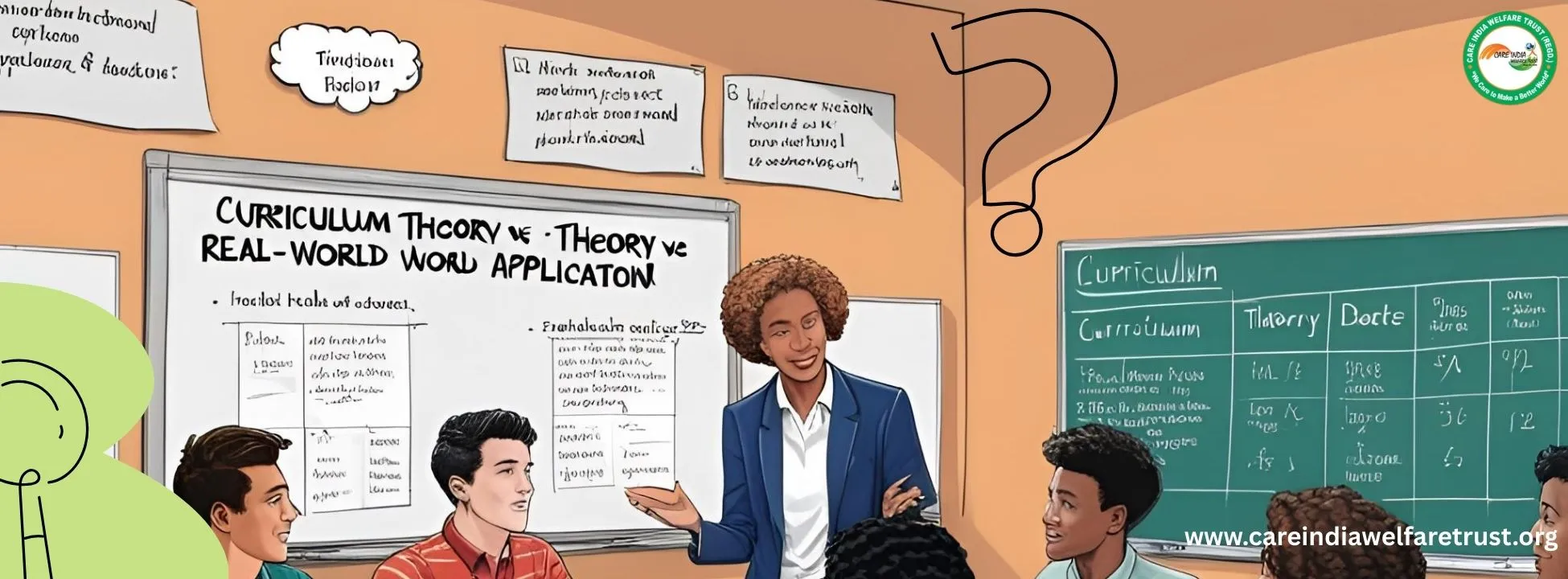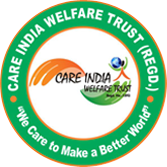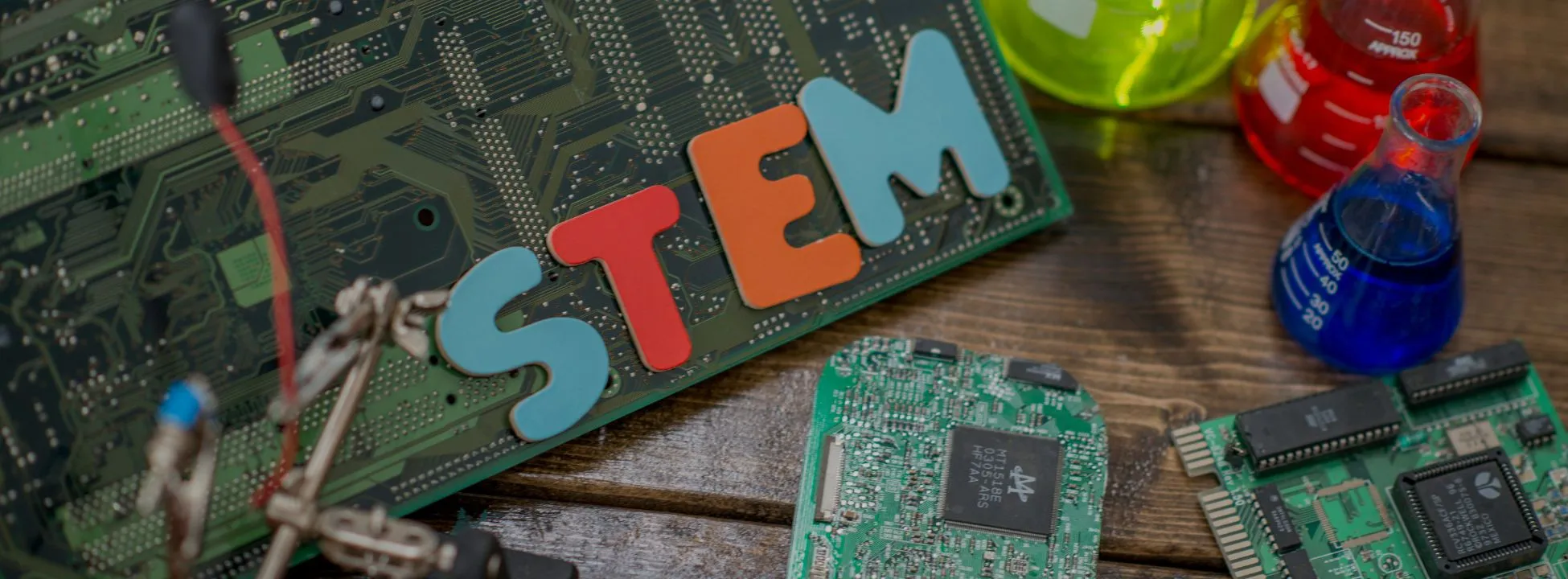Introduction: Understanding Education in a Modern World
Education plays a very important role in shaping the future of every child. It helps students gain knowledge, build good habits, and prepare for a career. Over the years, the way we teach and learn has changed. Today, we live in a modern world where technology is growing fast, new jobs are being created, and the skills needed to succeed are very different from what they were 20 or 30 years ago.
Because of these changes, our education system must also grow and improve. That’s why people are now talking about new ways of teaching, like STEM education. STEM stands for Science, Technology, Engineering, and Mathematics. It focuses on real-world learning, creativity, and problem-solving. At the same time, traditional education, which includes lectures, textbooks, and exams, is still used in many schools.
Both traditional and STEM education aim to help students, but they do it in different ways. While traditional methods focus on memorizing facts and learning step-by-step, STEM education encourages hands-on learning, teamwork, and thinking outside the box.
In today’s modern world, we need students who can adapt, solve problems, and use technology wisely. That’s why it is important to understand the difference between traditional and STEM education. Knowing how each system works can help parents, teachers, and students choose the best path for learning. Organizations like Care India Welfare Trust also play a key role by promoting innovative and inclusive education models that prepare underprivileged children for a brighter future. In this blog, we will compare both education styles to see how they are different and how they can work together to build a better future.
What is Traditional Education?
Traditional education is the long-established way of teaching and learning that has been used in schools for many years. It usually takes place in a physical classroom where a teacher stands in front of students and delivers lessons. The teaching style is mostly based on lectures, textbooks, blackboards, and note-taking. In this system, the teacher is the main source of knowledge, and students are expected to listen, memorize, and repeat the information.
Subjects like mathematics, science, language, and social studies are taught separately. There is less focus on how these subjects connect or with real-world situations. Most of the learning is theoretical rather than practical.
Students are often tested through written exams, and their performance is measured by grades. This method values discipline, structure, and routine, which helps in developing a strong academic base.
While traditional education is good at teaching facts and following rules, it may not always encourage creative thinking or problem-solving. It also tends to treat all students the same, even though everyone learns differently. Despite these limitations, traditional education continues to be used widely because of its organized structure and familiarity to both teachers and students.
What is STEM Education?
STEM Education is a learning approach that combines four main subjects: Science, Technology, Engineering, and Mathematics. Instead of teaching each subject separately, STEM blends them to solve real-world problems. It helps students think critically, ask questions, explore ideas, and use what they learn in practical ways.
STEM is not just about reading books or taking tests. It focuses on hands-on learning, where students do experiments, build projects, and work in teams. For example, instead of just learning about electricity from a book, students might build a simple circuit or a small robot.
This method encourages creativity and helps students develop problem-solving skills. It also prepares them for careers in fast-growing fields like computer science, data analysis, engineering, and medical technology.
STEM Education is important in today’s world, where technology is everywhere. It helps children learn how things work and how to create new solutions using science and math.
Key Points:
- STEM stands for Science, Technology, Engineering, and Mathematics
- It combines subjects to solve real-world problems
- Focuses on hands-on projects and teamwork
- Builds critical thinking and creativity
- Prepares students for future careers in tech and science
- Makes learning active, fun, and practical
Teaching Methods: Lecture vs Hands-on Learning
The way students are taught in school can affect how well they understand and enjoy learning. There are two main teaching methods used in education: lecture-based learning and hands-on learning. Each method has its style and benefits.
Lecture-Based Learning (Traditional Method)
- The teacher speaks, and students listen and take notes.
- Information is shared through textbooks, chalkboards, or slides.
- The focus is on remembering facts and writing exams.
- Students don’t always get to ask questions or participate actively.
- Works well for large groups and basic knowledge.
Hands-on Learning (STEM Method)
- Students learn by doing activities, experiments, or building models.
- It encourages active thinking, teamwork, and problem-solving.
- Students understand better by seeing and practicing, not just listening.
- Teachers guide students as they work on real-world problems.
- Helps make learning fun, creative, and meaningful.
In summary, lecture-based learning is useful for basic knowledge, but hands-on learning helps students apply what they learn. A mix of both methods often gives the best results in the classroom.

Curriculum Focus: Theory vs Real-World Application
One major difference between traditional education and STEM education is the focus of their curriculum. Traditional education is mostly theory-based. It teaches students facts, formulas, and definitions from textbooks. For example, in a math class, students may learn how to solve equations by following steps on paper. In science, they might memorize definitions and laws without doing experiments. The focus is often on passing exams rather than understanding how knowledge is used in daily life.
In contrast, STEM education focuses on real-world applications. This means students learn concepts by using them in practical situations. For example, instead of just learning math formulas, they might use them to design a bridge or build a model. In science, they do experiments to test their ideas and solve real problems. This kind of learning helps students understand why they are studying a subject and how it applies to the world around them.
By connecting lessons to real-life situations, STEM education keeps students more engaged and helps them remember what they learn. It also prepares them better for modern careers, where using knowledge to solve problems is more important than just memorizing facts.
Skill Development: Memorization vs Critical Thinking
In traditional education, memorization is often the focus. Students are expected to remember facts, dates, and formulas. This helps build a strong foundation of knowledge, but can sometimes lead to passive learning. Students may know answers but may not understand how to apply them in real-world situations. Memorization is useful for subjects like history or languages, where recalling facts is important, but it doesn’t always encourage deep understanding.
On the other hand, critical thinking is the core of STEM education. Instead of just memorizing information, students are taught to analyze, question, and evaluate what they learn. Critical thinking involves looking at problems from different angles, finding solutions, and applying knowledge in new and creative ways. This approach helps students develop important life skills, such as decision-making, problem-solving, and innovation. Critical thinking encourages students to ask "Why?" and "How?" rather than just "What?"
In summary, memorization helps with foundational knowledge, but critical thinking builds the skills needed to navigate and solve complex problems. While both skills are valuable, critical thinking is essential for success in the modern world, especially in fields that require creativity, innovation, and problem-solving, such as in STEM careers.
Pros and Cons of STEM Education
Pros of STEM Education:
- Real-world Application: STEM education focuses on solving real-life problems. Students learn through hands-on activities, which help them understand how science, technology, engineering, and math work in the real world.
- Promotes Critical Thinking: It encourages students to think creatively and critically. Instead of memorizing facts, students learn how to ask questions, explore ideas, and develop solutions.
- Teamwork and Communication: STEM activities often require group work, helping students develop collaboration and communication skills, important for any future career.
- Career Opportunities: STEM fields are growing rapidly. Students with STEM knowledge have more job options and higher earning potential in the future.
Cons of STEM Education:
- Lack of Resources: Many schools don’t have the tools, trained teachers, or funding to provide high-quality STEM education to all students.
- Less Focus on Arts and Humanities: STEM-heavy programs may overlook subjects like literature, history, and the arts, which are also important for personal growth and creativity.
- Pressure and Difficulty: STEM subjects can be challenging. Some students may feel overwhelmed or lose interest if they struggle to keep up.
- Not One-Size-Fits-All: STEM may not suit every student’s learning style or interests, making it less inclusive if not balanced with other teaching methods.
Student Engagement: Passive vs Active Participation
- Passive Participation (Traditional Education):
- Teacher-Centered: In passive participation, the teacher is the main focus. Students mostly listen and take notes during lessons.
- Limited Interaction: There is little opportunity for students to ask questions or share ideas.
- Memorization: Students often focus on memorizing facts and information, with less emphasis on understanding or applying knowledge.
- Limited Creativity: This approach may not allow students to think critically or express their own thoughts and opinions.
- Predictable Learning Environment: Lessons follow a set routine with limited variety, which can lead to disengagement.
- Active Participation (STEM Education):
- Student-Centered: In active participation, students are the focus. They are encouraged to ask questions, discuss ideas, and collaborate with others.
- Hands-on Learning: Students engage in experiments, projects, and real-world problem solving. They learn by doing, not just listening.
- Critical Thinking: Students actively analyze, evaluate, and create solutions to problems, improving their decision-making skills.
- Increased Engagement: Active participation keeps students engaged and interested in learning, as they are directly involved in the process.
- Collaboration and Communication: Students work in teams, learning how to communicate effectively and collaborate with others on tasks.
Active participation leads to deeper learning and better retention of information compared to passive learning.
Career Readiness: Conventional Jobs vs Future Industries
In today’s education system, there is a growing focus on preparing students for career readiness, helping them develop the skills they need to enter the workforce successfully. Traditionally, education has emphasized conventional jobs like teaching, law, medicine, and business. These fields have been the backbone of the economy for decades, and students have been prepared to work in these sectors through traditional education methods.
However, as technology and innovation rapidly evolve, new future industries are emerging, such as artificial intelligence, data science, renewable energy, and robotics. These fields demand new skills, like problem-solving, critical thinking, and advanced technological knowledge, which are emphasized in STEM education.
Preparing students for conventional jobs provides a stable foundation, but it may not be enough for the future. To stay competitive, students must be equipped with the tools to adapt to evolving industries. This means learning not just theory but hands-on skills that directly relate to future careers, such as coding, engineering, and digital literacy.
By embracing both conventional and future-focused education, we ensure that students are ready for today’s job market while staying prepared for tomorrow’s opportunities.
Assessment Techniques: Exams vs Projects and Collaboration
In traditional education, assessments usually focus on exams. These exams test a student’s ability to memorize facts, recall information, and solve problems within a set time. While exams can measure how much a student knows about a subject, they often don’t assess creativity, problem-solving, or teamwork. Exams are individual efforts, so students may not get the chance to demonstrate skills like collaboration or real-world application.
On the other hand, STEM education emphasizes projects and collaboration. Instead of sitting for exams, students work on hands-on projects where they apply what they've learned to solve real problems. These projects can involve building models, conducting experiments, or even coding programs. This method allows students to showcase their critical thinking and innovation.
Collaboration plays a huge role in STEM assessments. Working in teams allows students to share ideas, divide tasks, and learn from each other, which reflects how they’ll work in future careers. Collaborative projects also help students develop communication and teamwork skills, which are essential in most modern jobs.
In conclusion, while exams are quick and simple assessments, projects and collaboration in STEM offer a deeper understanding of a student’s abilities, preparing them for practical and professional challenges.
Challenges in Both Approaches
Both traditional education and STEM education have their unique challenges that need attention for effective learning. Here’s a breakdown:
- Traditional Education Challenges:
- Limited Creativity: Students often have to memorize information, which can limit creativity and problem-solving skills.
- One-Size-Fits-All: The rigid structure doesn't cater to every student's learning style or pace. Some students may struggle with this system.
- Outdated Methods: Traditional methods might not always connect to the modern world, especially in a fast-changing job market.
- Lack of Practical Skills: Students learn theories, but without real-world applications, they might struggle to use that knowledge in their careers.
- STEM Education Challenges:
- Requires Resources: STEM education demands resources like labs, technology, and equipment that some schools may not afford.
- Teacher Training: STEM requires teachers to be well-trained in modern technology and methods, which is not always the case.
- Time-Consuming: Hands-on learning and projects take more time, which can make it hard to cover everything in the curriculum.
- Complex for Some Students: The focus on problem-solving and teamwork can be overwhelming for students who prefer traditional learning.
Each approach has its hurdles, but with the right strategies, both can provide an enriching learning experience.
Which is Better? A Balanced Perspective
Choosing between STEM education and traditional education isn’t about picking one over the other—it's about finding the right balance. Both have unique benefits that can complement each other to create a well-rounded learning experience.
Traditional education provides a strong foundation in core subjects and essential skills like reading, writing, and basic math. It builds discipline, focus, and helps students gain knowledge in a structured way. This approach is valuable for mastering foundational concepts and preparing students for conventional careers like teaching or law.
On the other hand, STEM education nurtures creativity, problem-solving, and collaboration. It prepares students for careers in fast-growing fields such as technology, engineering, and healthcare. STEM encourages students to think critically and apply what they learn in practical, real-world situations.
The best approach isn’t about choosing one system over the other but integrating both. Students can benefit from a solid foundation in traditional subjects while also developing the practical skills, creativity, and critical thinking that STEM education offers. A balanced perspective ensures students are prepared for both today's job market and the challenges of the future. By combining the strengths of both systems, we can foster a generation of well-rounded, innovative thinkers.
Conclusion: Choosing the Right Path for the Future
As we move into an increasingly tech-driven world, education must evolve to prepare students for the challenges ahead. Both traditional education and STEM education offer unique benefits. Traditional education builds strong foundations in essential subjects, teaching students discipline and theoretical knowledge. On the other hand, STEM education equips students with hands-on experience, critical thinking skills, and the ability to solve real-world problems—skills that are crucial in today’s rapidly changing job market.
The key lies in finding a balance between the two. By blending the strengths of traditional learning with the practical, innovative approach of STEM, we can create an education system that not only builds knowledge but also sparks creativity and future-ready skills. The goal is to give students the tools they need to thrive, no matter which path they choose. The future demands adaptable thinkers—let's ensure they have the right education to get there.
FAQ
Are STEM Schools Public Or Private?
STEM schools can be both public and private. Public STEM schools are government-funded, while private ones are independently funded, often offering specialized programs focused on science, technology, engineering, and math.
Are STEM Schools Better?
STEM schools are often considered better for developing problem-solving, critical thinking, and tech skills, but the best choice depends on a student’s interests, learning style, and future goals.



